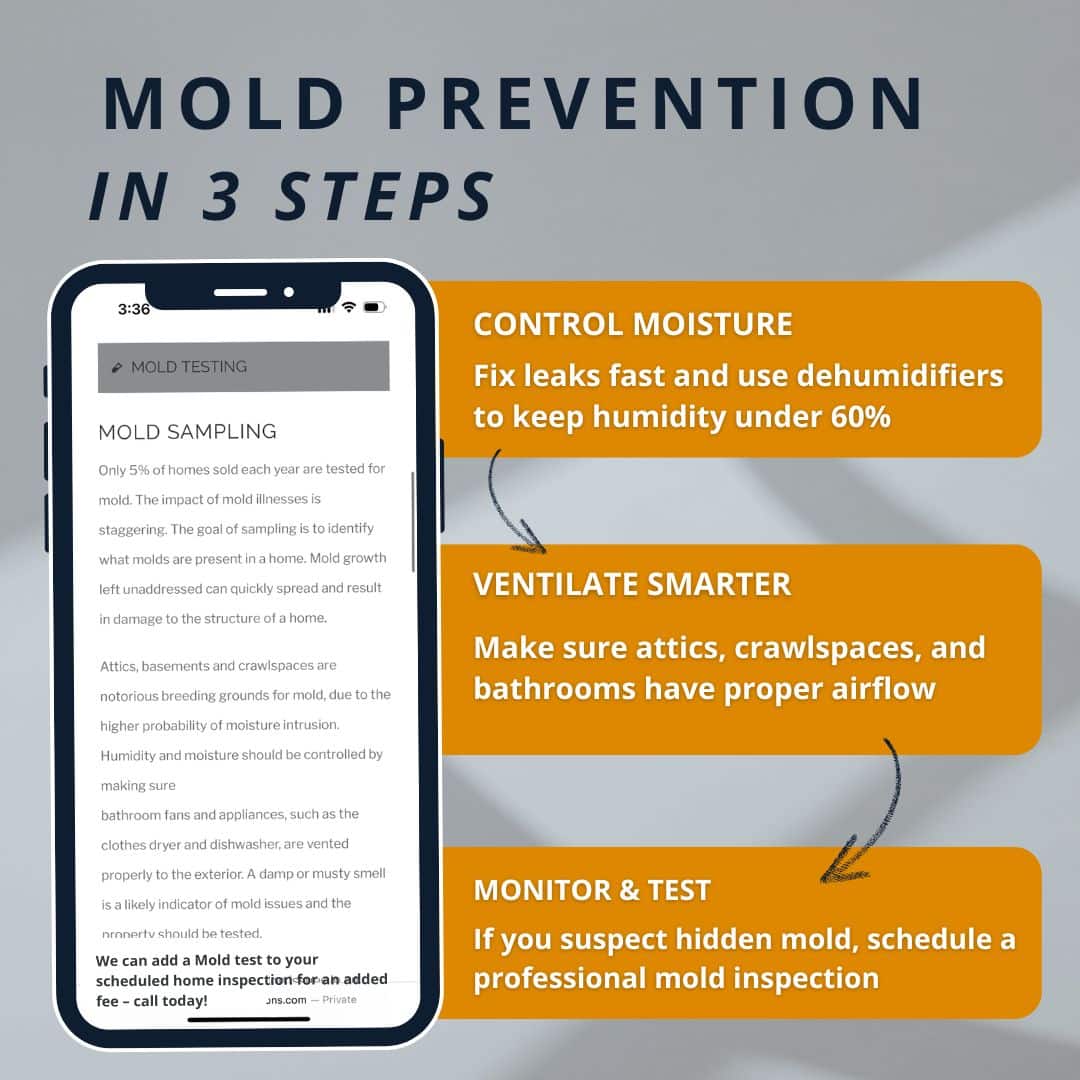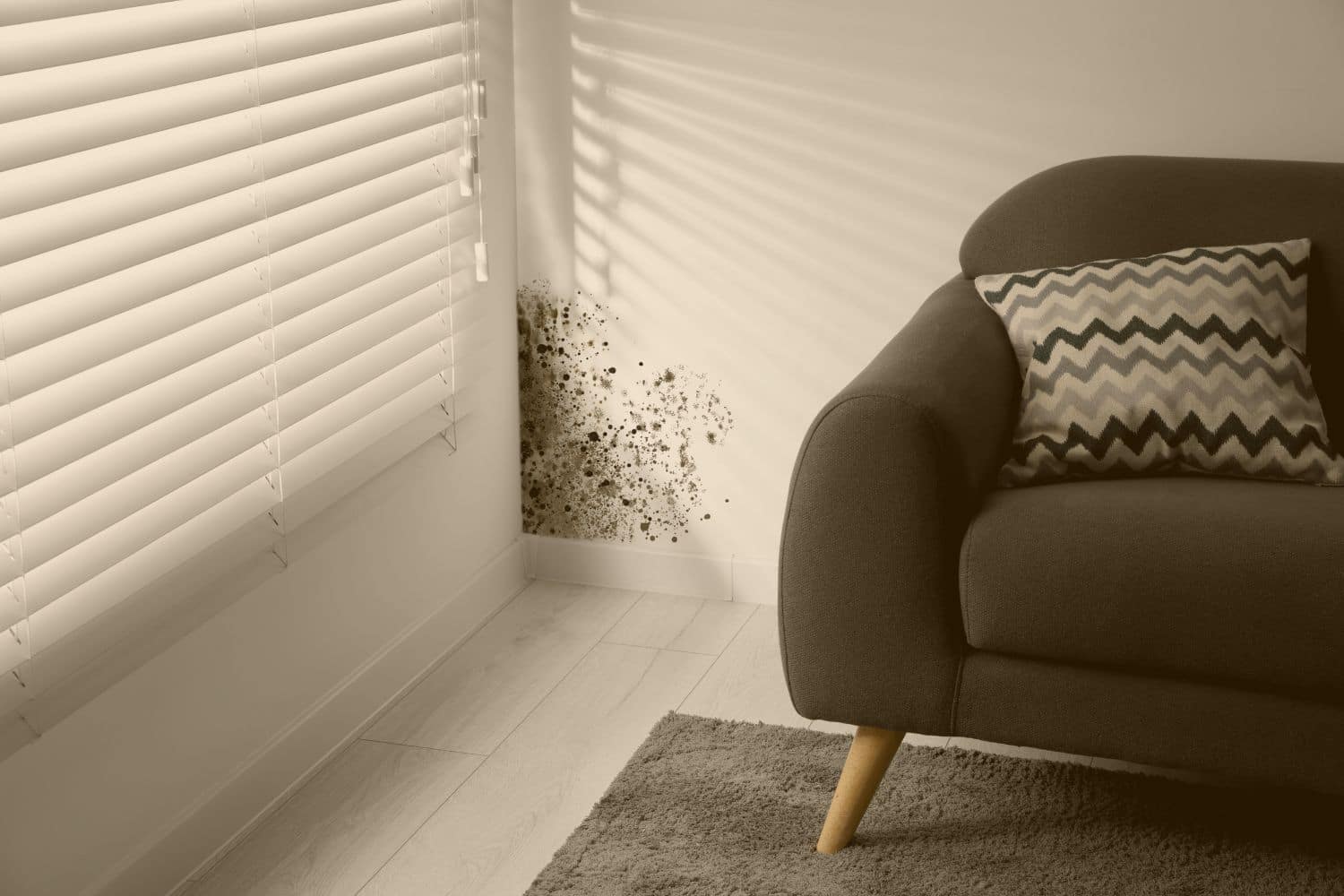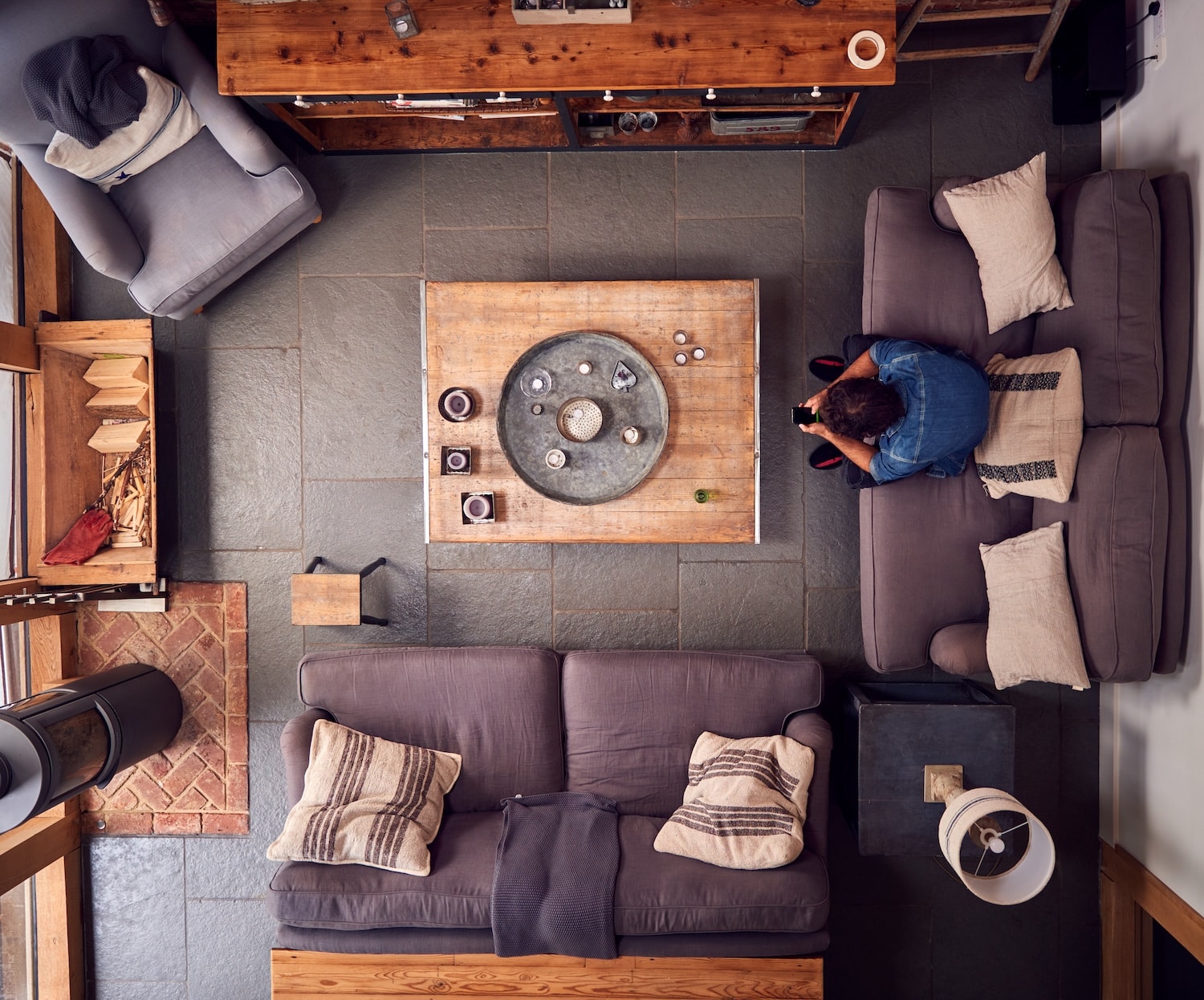When most people think of mold, they picture a musty smell or see greenish-black spots on the wall. But here’s the problem: not all mold smells, and not all mold is visible. That means it can hide in your home without any obvious warning signs.
So how do you know if mold is growing behind the scenes?
In this guide, we’ll explain why mold doesn’t always have a smell, what subtle symptoms you should look out for, and how professional mold testing works if you’re unsure what’s lurking in the air.
Why Mold Doesn’t Always Smell
Mold produces gases called microbial volatile organic compounds (MVOCs). These are what give off that “musty” odor. But the smell isn’t always present, and here’s why:
- Some types of mold produce little to no odor
- Growth may be hidden behind walls or under flooring
- Low levels of mold may not release enough MVOCs to be detected by smell
Mold can grow in as little as 24 to 48 hours in the right conditions: warmth, moisture, and a food source like drywall or wood. But unless you’re near the mold colony or it’s reached a large enough size, your nose might not pick up anything at all.

Signs of Mold Without a Smell
If you don’t smell anything unusual, but you suspect there’s a problem, here are other red flags to look for:
1. Unexplained Allergies or Respiratory Symptoms
- Sneezing
- Coughing
- Congestion
- Itchy eyes or skin
Mold exposure is linked to increased asthma attacks and allergic reactions. If symptoms are worse at home and improve when you leave, mold could be to blame.
2. Visible Stains or Wall Discoloration
Mold isn’t always green or black. It can show up as:
- Yellowish stains
- Gray spots
- Warped paint or bubbling wallpaper
Moisture behind walls can push mold to the surface in subtle ways. If you see strange stains and can’t explain them with a plumbing or roof leak, it’s time to investigate further.
3. Unusual Moisture or Humidity Indoors
Mold thrives in high humidity. Keep indoor humidity below 60%, ideally between 30–50%. If your home feels damp, or your windows regularly have condensation, mold may already be forming in hidden areas.
4. Frequent Headaches or Fatigue
Exposure to indoor mold can trigger more than just sneezing. Some people report:
- Brain fog
- Ongoing fatigue
- Headaches or dizziness
These symptoms often get dismissed as seasonal illness or stress, but mold-related illness is real, especially in homes with poor air circulation or prior water damage.
Common Places Mold Grows Unnoticed
Here are a few of the most common mold hotspots that may not smell or show visible signs right away:
- Behind bathroom walls (especially near tubs or showers)
- Inside HVAC systems or ductwork
- Under carpeting or padding
- Around windows with poor seals
- Inside the basement, insulation or ceiling tiles
- In attics with roof ventilation problems
According to the National Association of Home Builders, nearly 70% of homes with crawlspaces or unfinished basements report at least minor mold issues over time.
What Mold Smells Like (When It Does)
If there is an odor, here’s how people often describe it:
- Earthy or muddy
- Like rotting wood or wet socks
- Slightly sweet or sour
Keep in mind that mold smell can fade in cooler temperatures or in well-ventilated rooms, even when the colony is still active.
How to Know for Sure: Professional Mold Testing
If you suspect mold but can’t see or smell anything, the only way to confirm it is with professional mold testing. These inspections go beyond surface-level signs and use tools and techniques designed to detect hidden moisture and airborne spores that DIY kits often miss.
Here’s what’s typically included:
1. Visual Inspection
A licensed mold inspector will walk through your home to look for stains, warping, water damage, and construction gaps that could support mold growth. They’ll also check areas known to be mold-prone, such as basements, attics, crawlspaces, under sinks, and behind appliances.
Even if there are no obvious spots of mold, this first step helps identify risk areas and potential causes like roof leaks or plumbing issues.
2. Moisture Readings
Moisture is the trigger for mold, so this part of the inspection is critical. Pros use thermal imaging cameras to spot temperature differences that could indicate dampness behind walls or under flooring. Moisture meters provide exact readings on wood, drywall, and other materials.
If these tools pick up damp conditions, it’s a strong clue that mold may already be forming or could grow if left untreated.
3. Air Sampling
Even when mold is not visible, spores can float in the air and circulate through your HVAC system. Air samples are taken from both inside and outside the home to compare spore concentrations. If spore counts indoors are significantly higher than outside, that suggests hidden mold. This helps detect mold in areas you can’t access, like inside ductwork or wall cavities.
4. Surface Swab Testing
If any suspicious patches are found during the inspection, a surface swab or tape lift test can identify the mold species and spore count. This can be useful for determining how hazardous the mold may be. For example, some strains like Stachybotrys chartarum (often referred to as black mold) are more likely to cause health issues, especially in sensitive individuals.
5. Detailed Reporting and Next Steps
After testing, you’ll receive a written report outlining the findings, including photos, spore data, moisture readings, and recommendations. This documentation can be important if you’re selling or buying a home, working with insurance, or planning mold remediation.
At Prospective Home Inspections, we use non-invasive, science-backed methods to make sure you have a full picture of what’s going on in your home. If mold is present, we can guide you on what to do next based on the results.

Other Related Questions Homeowners Ask
What if the mold is hiding in the crawlspace or attic?
These are two of the most common areas for hidden mold. If there is poor ventilation or trapped moisture, colonies can grow quietly for months without any visible signs. A full crawlspace or attic inspection can help confirm what’s going on in those hard-to-reach spaces.
Should I request mold testing before buying a house?
Yes. A standard home inspection may not include mold testing unless it’s specifically requested. Adding a mold test can help you understand the true condition of the home, especially if there are signs of water damage or humidity issues.
Is mold more common in older homes?
Not necessarily. New construction can also have mold issues, especially if there were construction delays, roof leaks, or poor ventilation.
When to Call a Professional
If your home has experienced flooding, water leaks, or unexplained health symptoms, it’s worth scheduling a mold inspection.
Prospective Home Inspections provides certified mold testing that helps:
- Detect hidden moisture problems
- Identify potential health risks
- Give peace of mind during home purchases or renovations
We serve Naperville and the surrounding areas with quick scheduling, clear reporting, and science-backed testing methods.
Conclusion
Just because you don’t smell mold doesn’t mean you’re in the clear. Mold can grow quietly, spread behind walls, and trigger serious health problems over time.
If you notice warning signs like fatigue, allergies, or strange wall stains, don’t ignore them. Mold testing is the only way to know for sure.



